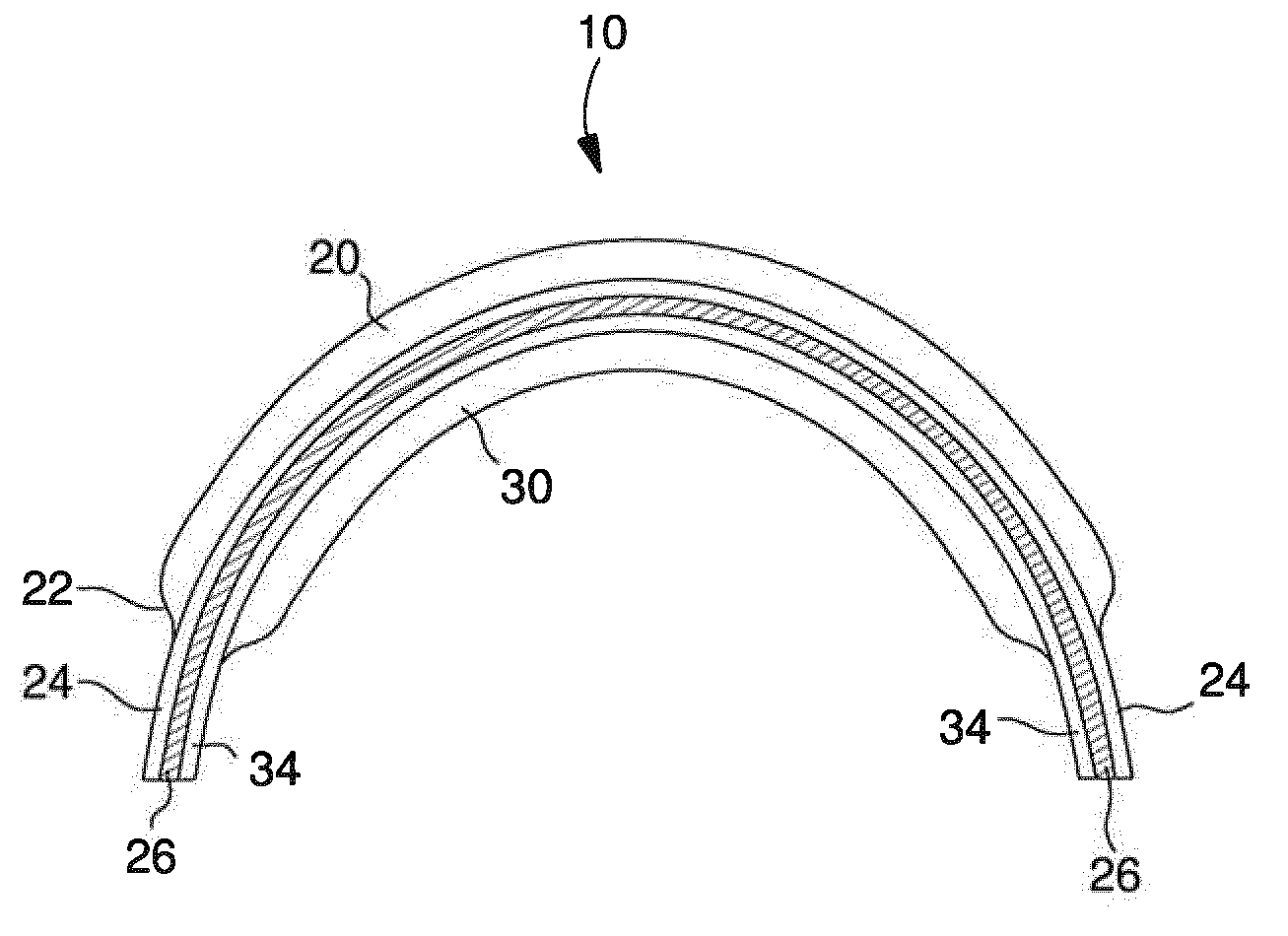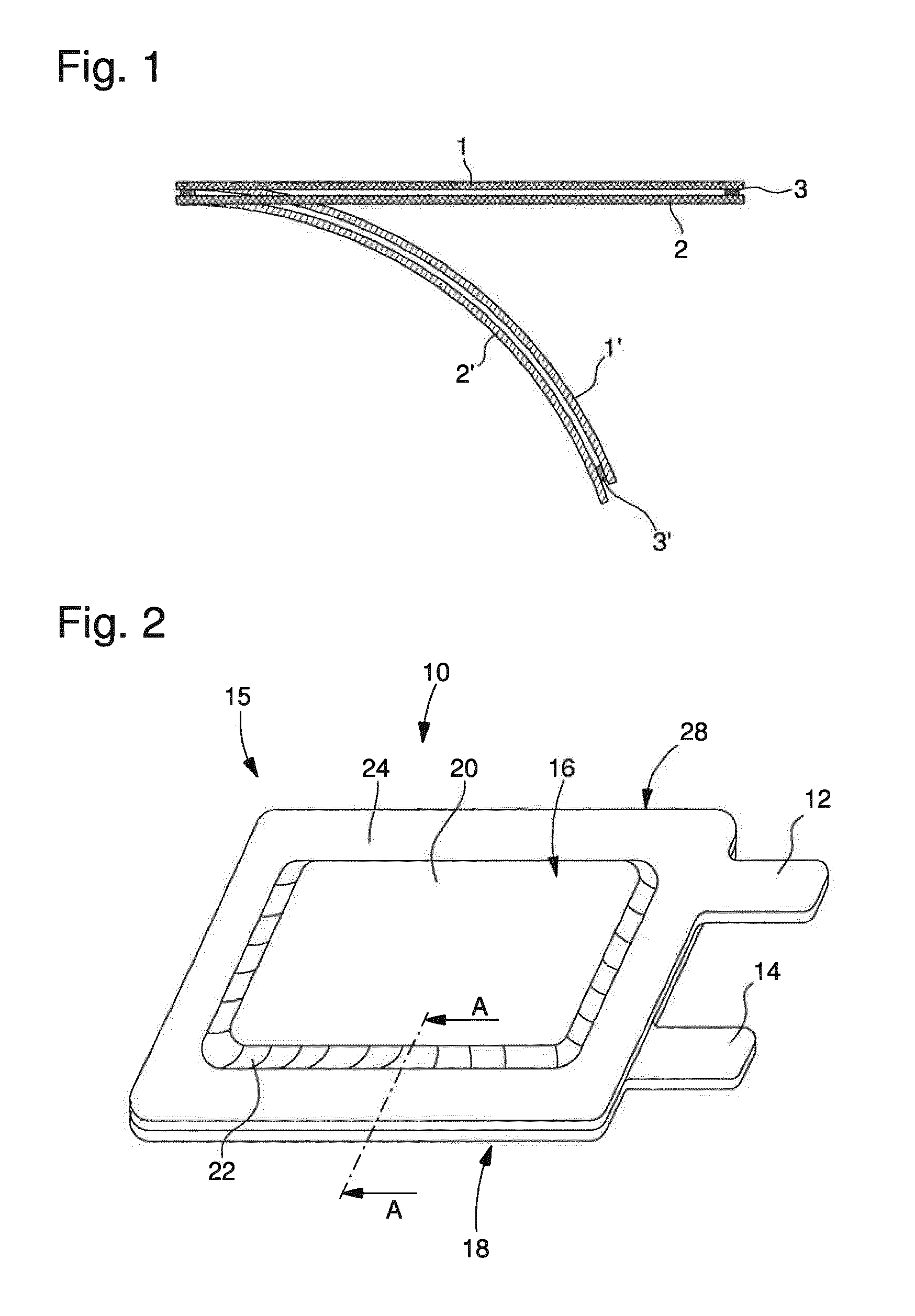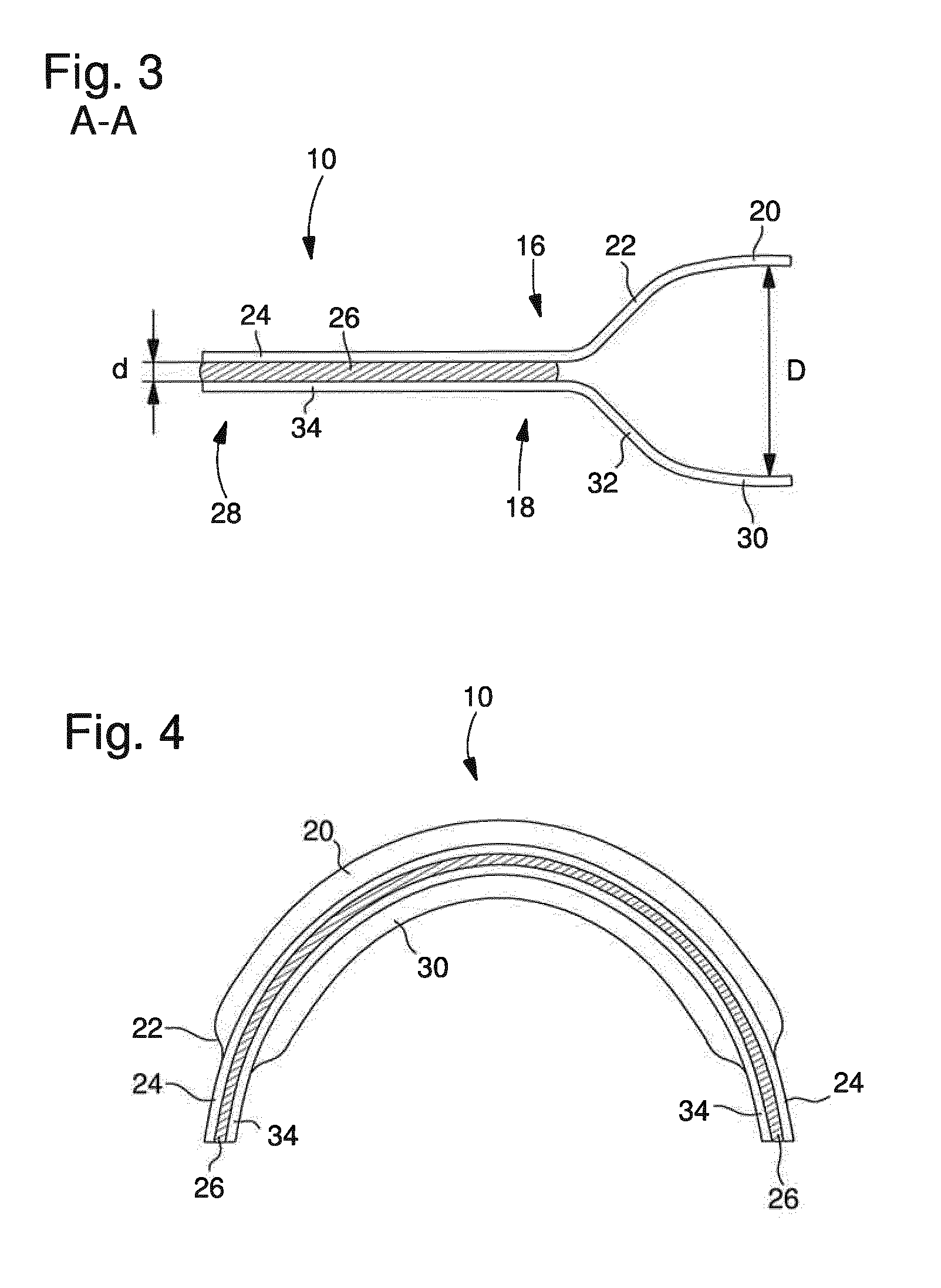Electrochemical cell
- Summary
- Abstract
- Description
- Claims
- Application Information
AI Technical Summary
Benefits of technology
Problems solved by technology
Method used
Image
Examples
Embodiment Construction
[0056]The electrochemical cell 10 as it is schematically illustrated in FIGS. 2-4 comprises a first current collector 16 and a second current collector 18.
[0057]While in the perspective illustration according to FIG. 2 only the upper, first current collector 16 is illustrated, the shape and arrangement of the second or lower current collector 18 is discernible from FIGS. 3 and 4. The first current collector 16 comprises a connector tab 12 that may be integrally formed with the first current collector 16. The same may also apply to the second current collector 18 featuring an integrally formed connector tab 14.
[0058]First and second current collectors 16, 18 each comprise a collecting section 20, 30 and a connecting section 24, 34 as illustrated in FIG. 3. For instance, the first connecting section 24 of the first current collector 16 is integrally formed with the first collecting section 20. The first collecting section 20 merges into the first connecting section 24 via a first prof...
PUM
 Login to View More
Login to View More Abstract
Description
Claims
Application Information
 Login to View More
Login to View More - R&D
- Intellectual Property
- Life Sciences
- Materials
- Tech Scout
- Unparalleled Data Quality
- Higher Quality Content
- 60% Fewer Hallucinations
Browse by: Latest US Patents, China's latest patents, Technical Efficacy Thesaurus, Application Domain, Technology Topic, Popular Technical Reports.
© 2025 PatSnap. All rights reserved.Legal|Privacy policy|Modern Slavery Act Transparency Statement|Sitemap|About US| Contact US: help@patsnap.com



